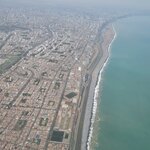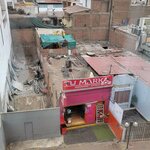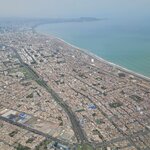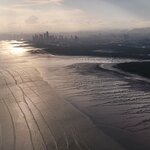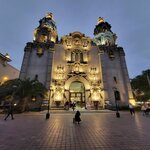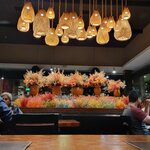Highlights
- Discover the rich culture of Cusco, the ancient Inca capital
- Visit the famed citadel of Machu Picchu on a guided tour
- Spend five days observing wildlife in Manú National Park
Brief Itinerary
| Day | Highlights | Overnight |
|---|---|---|
| Day 1 | Arrive in Cusco, Self-Guided Tour | Cusco |
| Day 2 | Sacred Valley Tour, Transfer to Ollantaytambo | Ollantaytambo |
| Day 3 | Day Trip to Machu Picchu, Transfer to Cusco | Cusco |
| Day 4 | Transfer to Manú National Park | Manú National Park |
| Day 5 | Boat Trip to Hummingbird Lodge, Nature Hikes | Manú National Park |
| Day 6 | Boat Trip to Casa Matshiguenka | Manú National Park |
| Day 7 | Day Trip to Lake Salvador & Lake Otorongo | Manú National Park |
| Day 8 | Boat Trip to Maquisapayoj, Nocturnal Wildlife Tour | Manú National Park |
| Day 9 | Parrot Viewing Tour, Transfer to Cusco | Cusco |
| Day 10 | Fly to Lima, Depart |
Detailed Itinerary
Day 1: Arrive in Cusco, Self-Guided Tour

Welcome to Peru! This wondrous South American nation enjoys a wealth of diversity, be it culturally, historically, and even geographically. Here, the scenery ranges from coastal metropolises to highland Inca ruins to the lush jungles of the Amazon Basin—and you'll see all of it on this adventure.
It begins with your arrival in the capital of Lima. Once there, you'll immediately transfer by plane about 45 minutes north to the highland city of Cusco, a former capital of the Inca empire from the 13th-16th centuries. At the airport, a driver will be waiting to transfer you to your hotel in the city. Once you've settled in, you can explore on a self-guided tour. Just remember to take it easy. Cusco sits in the Andes mountains at 11,200 feet (3,400 m), and you'll feel the effects. That said, you can mitigate altitude sickness by doing like the Peruvians and chewing mate de coca tea leaves.
When you're ready, begin the tour in the historic center at the Plaza de Armas, the city's main square. Once a central meeting point during the Inca Empire, the Spanish founded the plaza in 1534, destroying and replacing the Inca buildings with colonial mansions and churches. The most famous is the Cusco Cathedral, which dates to 1654 and remains remarkably well-preserved. From there, you can wander the winding, cobbled streets of San Blas, a bohemian neighborhood with a wealth of Spanish-colonial landmarks, art galleries, handicraft shops, and cozy cafés.
Day 2: Sacred Valley Tour, Transfer to Ollantaytambo

Get ready for a full day of culture in Peru's famous Sacred Valley, a historically rich area north of Cusco. It begins early with a pickup from your hotel and a drive into the valley and the village of Chinchero, believed by the Inca to be the birthplace of the rainbow. Here, you'll tour Inca terraces and colonial-era churches, plus visit a weaver's studio to learn about the town's famous textile production. See firsthand the process of cleaning and weaving wool, then browse the selection of colorful textiles for the perfect gift or souvenir to take home.
Afterward, continue to the archaeological site of Moray, a series of circular stone terraces built by the Inca. These were likely developed for experimental agriculture in microclimates and thus are a fine example of the engineering prowess of that ancient civilization. From Moray, you'll transfer to the nearby Maras Salt Flats, an intricate network of stone pools developed by the Inca to harvest salt through evaporation. Harvesting continues to this day, with local community members managing the flats according to traditions dating back to the time of the Inca.
From the salt flats, continue to the ancient city of Ollantaytambo, one of the few remaining places in the Sacred Valley that has retained its original Inca urban planning. Once here, you'll check into your hotel and can spend the remainder of the day wandering the town's cobbled streets and exploring the nearby ruins and archaeological sites.
Day 3: Day Trip to Machu Picchu, Transfer to Cusco

After an early breakfast, you'll board a train in Ollantaytambo for the 1.5-2-hour ride northwest to Aguas Calientes. This little mountain town is the main base for excursions to Machu Picchu. From town, you'll take a 25-minute bus ride up a mountain and arrive at the "Lost City of the Incas," a 15th-century Inca citadel sitting at 7,970 feet (2,430 m). This engineering masterpiece served as a sanctuary and retreat for the Inca Emperor Pachacutec and his royal court; today, it's a UNESCO World Heritage status and one of the New Seven Wonders of the World.
During a two-hour tour led by an expert guide, you'll hike to all corners of the complex and visit its most famous features and landmarks. These include astronomical/ritual stone structures like the Temple of the Sun and the Temple of the Moon. Many landmarks, like the Sacred Plaza and Inca Bridge, showcase the Incas' architectural prowess. The agricultural terraces are also impressive, demonstrating the Incas' skill at cultivating crops on steep hillsides.
After the tour, take the bus back to Aguas Calientes, where you can enjoy lunch in the town center before boarding a train back to Cusco via Ollantaytambo. You'll check into your hotel in Cusco and have the evening free.
Day 4: Transfer to Manú National Park

It's a 5:30 am wake-up call today when your driver will pick you up at your hotel. From Cusco, it's an 8-9 hour drive into the Peruvian jungle. During this scenic road trip, you'll pass the journey's highest point at more than 13,000 feet (4,000 m). It's certainly a long journey, but there will be plenty of stops to rest, grab food, and visit ancient landmarks. One highlight is the Cullpas of Ninamarca, a Pre-Inca cemetery.
From there, continue down the Andes until you reach Paucartambo, which sits at 9,514 feet (2,900 m). This small town boasts a lot of history and tradition, as it's known as the folkloric capital of Peru. After a brief tour, you'll get back in the car for the drive to Acjanaco (11,679 ft/3,560 m), which marks the entrance to Manú National Park. Covering an area of approximately 6,000 square miles (15,000 sq km), this is one of the largest protected areas in the country. Manú boasts exceptional biodiversity, including pristine rainforests, diverse wildlife, and Indigenous communities.
You'll first glimpse the region's unique flora and fauna when you arrive at the San Pedro community, known for its orchids. There's a viewing platform here where you can do some birding. With any luck, you'll spot exotic avian species like toucans, tangaras, and (if you're really lucky) the resplendent quetzal. You might also glimpse animals like monkeys and even the spectacled bear. Afterward, continue driving deeper into the jungle, eventually arriving at the ecolodge, where you'll overnight.
Chat with a local specialist who can help organize your trip.
Day 5: Boat Trip to Hummingbird Lodge, Nature Hikes

It's another early start because, after breakfast, you'll board a bus for the two-hour ride to Atalaya, a town on the Ucayali River. Upon arrival, you'll trade the bus for a motorboat and travel about five hours down the waterways until you reach the Hummingbird Lodge, your accommodation for the night. The ride is scenic, as you'll likely spot plenty of aquatic birds and parrots fluttering around, as well as monkeys and capybaras on the banks.
Lunch will be served on the boat, and around 3 pm, you'll arrive at the lodge, which sits on the banks of the Madre de Dios River. The lodge is adjacent to the Manú reserve and offers great pathways to explore the jungle, which you can take advantage of on an optional nature hike this afternoon or evening.
Day 6: Boat Trip to Casa Matshiguenka

Leave the Hummingbird Lodge early and board another boat for a four-hour ride down the Madre de Dios River until it branches off into the Manú River. At this entrance to the reserve, park rangers will check your permits, and then you'll continue deeper into the rainforest. As you continue down the Manú River, you'll likely spot resident animals like monkeys, caimans, river otters, and perhaps even a jaguar.
After a while, you'll reach Casa Matshiguenka, the next lodge where you'll overnight. Sitting on the banks of the Manú, it's home to a friendly family who will introduce you to the unique and traditional lifestyle people lead in this remote rainforest. After dinner, you'll retire to your room and let the sounds of the jungle lull you into a peaceful sleep.
Day 7: Day Trip to Lake Salvador & Lake Otorongo

You're in for a treat, as today you'll travel up the river even deeper into the reserve. Your destination is Lake Salvador, one of the most vital lakes within the Manú National Park. Its diverse ecosystem is home to various animals, including giant river otters, black caiman, anacondas, many bird species, and around 13 species of monkeys.
Once at the lake, you'll transfer to a small catamaran, allowing you to get up close with the native wildlife. You'll return to the lodge after marveling at the animals and taking plenty of photos. Later in the afternoon, you'll head out for another lake tour, this time to Lake Otorongo, which can be viewed from a 65-foot (20 m) observation platform. After some time here, you'll return to the lodge.
Day 8: Boat Trip to Maquisapayoj, Nocturnal Wildlife Tour

This morning, you'll leave the nature reserve area of Manú National Park and transfer about six hours by boat to a buffer zone known as the Maquisapayoj (Manú Biosphere). This region conserves local wildlife with the help of natural clay licks—steep walls of red clay along riverbanks. The mammals in this area absorb salts and minerals from the clay, which helps them detoxify and digest their food.
During a nocturnal wildlife tour, you'll visit one of the most prominent clay licks in the area. With luck, you'll spot some of the animals that routinely pass by here at night, like tapirs, deer, porcupines, and various species of monkeys. After the tour, you'll return to Maquisapayoj Lodge, where you'll overnight.
Day 9: Parrot Viewing Tour, Transfer to Cusco

At 5:00 am, leave the lodge on a one-hour boat ride to another clay lick. This one attracts various species of macaws, which you can observe safely from a platform hidden in the forest. With binoculars in hand, you'll see plenty of these colorful birds congregating around the clay lick as they jockey to get their day's nutrients. After some time admiring the birds, you'll break for lunch.
Once you've eaten, you'll begin the return trip to Cusco. It starts with a three-hour boat ride downstream to Boca Colorado, where you will say goodbye to the crew that has accompanied you through the park over the last few days. In a private taxi, you'll drive about an hour to the town of Puerto Punkiri. Here, you'll cross the Inambari River and continue to Puerto Carlos. From there, it's a 7-8-hour bus ride back to Cusco, arriving around 10:00 pm. Overnight in Cusco.
Day 10: Fly to Lima, Depart

Alas, your grand Peruvian adventure has reached its conclusion. In the morning, a driver will pick you up at your hotel for the ride to Cusco's airport, where you'll board a flight back to Lima and catch your connecting flight home. ¡Buen viaje!
More Great Peru Itineraries
Looking for more inspiration for your trip to Peru? Check out these other Peru itineraries, explore different ways to spend 10 days in Peru, or learn about the best time to visit Peru.



